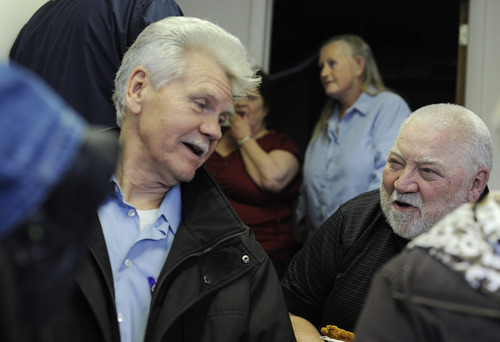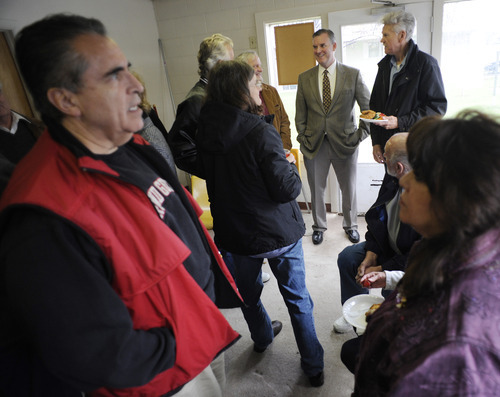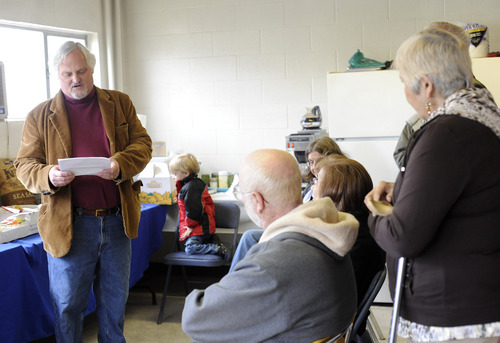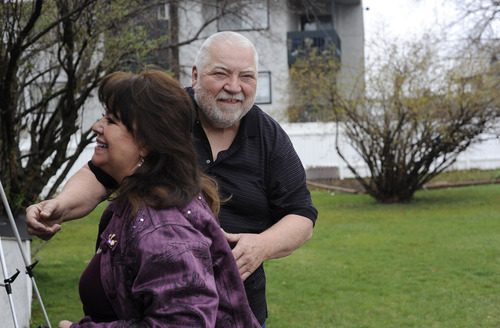This is an archived article that was published on sltrib.com in 2011, and information in the article may be outdated. It is provided only for personal research purposes and may not be reprinted.
Nearly six years ago, Minnie Yardley bought and refurbished a manufactured home in the close-knit Parkhill Mobile Estates community. Days after she moved in, the park owner sold the property to a developer that wanted to build condos.
Yardley's $20,000 investment suddenly seemed worthless. But instead of giving up, she rallied the manufactured-home park residents to push back. They showed up in force at Salt Lake County Council meetings. They alerted the Salt Lake County Housing Authority.
The housing agency threw in with the residents, and bought the park from the developers in September 2005. On March 30, after years of complex negotiations and tough decisions but with solid determination, Yardley and her neighbors owned their park.
"We fought and won," Yardley says. "Now we don't have to fear losing our homes anymore. Nobody can throw us out. That was the big thing."
—
A Utah first • Though other Utah mobile-home park residents have been able to work out ownership deals with park owners, Parkhill, located on 300 East near 3900 South and having a stellar view of the Wasatch Mountains, is the first in the state to work with multiple nonprofit and governmental agencies to organize as a co-op.
Make that the Parkhill Homeowners Cooperative Association, emphasis on "owners."
Bob Greer, president of the group, says the journey detoured into uncharted territory, starting with accepting the very idea that they, as mostly low-income people over 55, could close a million-dollar commercial property deal.
There was some small stuff, such as multiple surveys to figure out the property boundaries and discovering that a 1950s map relied on a creek line that has disappeared. Much bigger was figuring out how to incorporate, a task they completed in 2008, and convince lenders they were worth financial risk even though as an entity they lacked financial history.
"We were a little green on it," Greer says. "We didn't know what to do. Mark adopted us and told us what to do."
That's Mark Lundgren, a longtime low-income housing advocate and director of Utah Resident Owned Communities, a nonprofit dedicated to helping manufactured-home owners turn their communities into stable, affordable assets. The group is looking at more parks in Utah that might also go co-op.
—
The investment • Generally, mobile or manufactured homes aren't great investments, because they lose value just like cars. But in a resident-owned park, sellers can expect 17 percent to 20 percent more from sales, Lundgren says.
"They can hold their value — if you're not at risk of being moved out," he says.
Other technical assistance and financial support came from many sources, including the national Resident Owned Communities organization, a consortium of banks under the umbrella of the Utah Community Re-investment Corp., Salt Lake County and its housing authority, the Salt Lake Community Action Program and the state's Olene Walker Housing Loan Fund.
The Salt Lake County Housing Authority supported resident ownership because, though the agency moved fast to intervene, it didn't want to be mobile-home landlords, said Steven Graham, president of the Utah Community Re-investment Corp.
"We felt that of all housing types out there serving low-income people, manufactured home parks are generally the least-subsidized," he says.
Parkhill has been around since 1964, says resident Marvin Knudsen, a co-op officer. The population was always stable; in fact, he says, a couple of residents have been there since the beginning.
Some of the older residents, however, panicked when they heard of the pending sale to the developers. "Six of them got scared and walked away from their homes," Yardley says. "I was fighting for these people who had nowhere to go."
—
Living at home • Federal law says manufactured homes built before 1978 cannot be moved to other parks. Most of the homes in Parkhill were too old to travel, Knudsen says.
So, it seems, were some of the residents. Moving is stressful, especially for frail elders who may not recover from the disruption.
One of the residents who left was 96 and had been living independently at Parkhill. Her family put her in a nursing home, where she soon died, Yardley says. Another resident's family placed her in assisted living, where she lived for a year before she died.
Six of the Parkhill households, including Greer and his wife, Debbie, came from the 150-pad Meadows Mobile Home Park in Cottonwood Heights. That park's owner in 2007 sold to a developer who planned to build a subdivision of 29 mansions.
The residents dispersed and the property was scraped. "It looked like someone just swept up our house," Debbie Greer says.
As it happened, the housing market tanked. The single home built on the Meadows property has yet to sell.
The forced move shocked the Greers, who had to pack and store their belongings, move their home to Parkhill, prep it for occupation and then move back in. Both Greers have disabilities and vow not to relocate again, ever.
"We feel good they offered to sell it to us," Bob Greer says. "We have better peace of mind." —
Park conversion
Mobile-home residents of Parkhill Estates have organized into a co-op that, with the help of nonprofit and government organizations and a banking consortium, bought their park and peace of mind. More Utah parks may take the same path. For more information, go online to > http://bit.ly/hiWJDR.













